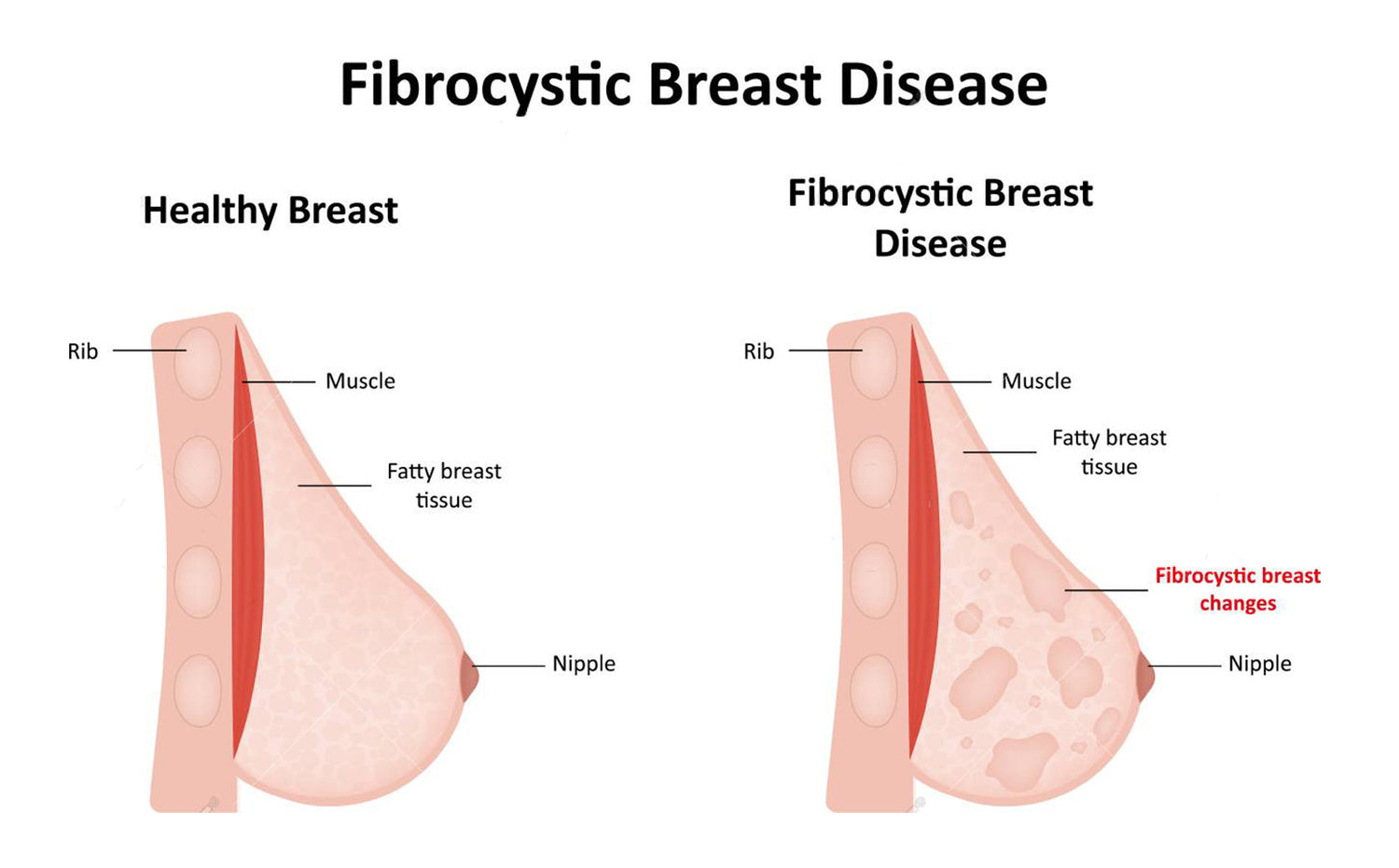As an Amazon Associate CoffeeXplore.com earns from qualifying purchases.
Coffee and Breast Lumps: Is There a Connection?
Finding a new lump in your breast can be a source of immediate concern, and it’s natural to start questioning everything in your diet and lifestyle. For many, the first question is about that daily cup of coffee: could this beloved ritual be the cause? You’re looking for a clear, fact-based answer to understand if you need to make a change and what’s really happening in your body.
No, there is no scientific evidence that coffee or the caffeine it contains directly causes breast lumps or breast cysts. The connection is not one of causation, but for some women, caffeine can potentially heighten the symptoms of pain and tenderness associated with a common, benign condition.
This guide, built on a thorough analysis of current research and data from leading health institutions, will eliminate the confusion. We’ll break down the true cause of most breast lumps, clarify the real but often misunderstood role of caffeine, and provide the definitive, evidence-based answer on the connection between coffee and your long-term breast health.
Key Facts
- No Causal Link: Extensive research has found no direct causal link between drinking coffee and the formation of breast lumps.
- Hormones are the Primary Driver: The most common cause of benign breast lumps is fibrocystic breast changes, a non-cancerous condition directly influenced by hormonal fluctuations during the menstrual cycle, as noted by sources like the Cleveland Clinic.
- Symptom vs. Cause: While caffeine doesn’t create lumps, some women with fibrocystic changes report that reducing caffeine intake helps lessen breast pain and tenderness. The link is to symptom severity, not the cause of the tissue changes.
- No Increased Cancer Risk: Decades of scientific studies have not only failed to link caffeine to breast cancer but, as the American Cancer Society reports, some studies suggest coffee may even have a protective effect, potentially lowering the risk in some women.
- Professional Evaluation is Key: Regardless of your coffee intake, any new or persistent breast lump should always be evaluated by a healthcare provider to ensure an accurate diagnosis and rule out any serious conditions.
The Short Answer: Does Coffee Directly Cause Breast Lumps?
No, coffee and the caffeine it contains do not cause breast lumps. Extensive research shows no causal link between caffeine consumption and the formation of breast lumps or an increased risk of breast cancer. This conclusion is supported by major health organizations, including the American Cancer Society and Cleveland Clinic, which have reviewed decades of scientific studies on the topic.

The anxiety surrounding this question is completely understandable, but the scientific consensus is clear and reassuring. The feeling of lumpiness or the presence of distinct lumps that many women experience is most often tied to normal, benign changes within the breast tissue itself, which are driven by factors completely unrelated to your morning cup of coffee.
The main takeaway is simple: Your coffee habit is not creating lumps in your breasts.
So if coffee isn’t the culprit, what is actually going on? Let’s break it down. The key is to understand the difference between what causes a physical change in your breast tissue and what might influence the symptoms you feel.
Understanding Benign Breast Lumps: What Are Fibrocystic Changes?
The primary cause of benign breast lumps is fibrocystic breast changes, a common, noncancerous condition where breast tissue becomes lumpy and sometimes painful due to hormonal fluctuations, especially around the menstrual cycle. This condition is so common that many experts consider it a normal variation of breast tissue rather than a disease. It affects a large number of women, particularly during their reproductive years.
Think of these changes like a monthly tide in your breast tissue, influenced by hormones. As hormone levels rise and fall, the breast tissue responds. This can lead to the development of fibrous, rope-like tissue and tiny, fluid-filled sacs called cysts. According to the American Cancer Society, these changes are benign and do not increase your risk of developing breast cancer.
Key characteristics of fibrocystic breast changes often include:
- Lumpiness or Tenderness: Breasts may feel generally “lumpy,” dense, or tender, especially in the upper, outer areas.
- Fluctuation with Menstrual Cycle: The lumps and associated pain often become more noticeable in the week or two leading up to your period and then improve after your period starts.
- Varying Lump Characteristics: The lumps can feel rubbery, firm, or like a small, movable bean. They can appear in one or both breasts.
- Generalized Breast Pain: A feeling of soreness, heaviness, or aching is common.
Understanding that these changes are a normal physiological response to your body’s natural hormonal rhythms is the first step in separating fact from fiction. The lumpiness you feel is a result of your body’s internal processes, not something you’re consuming. This distinction is critical for understanding caffeine’s true role in your breast health.
The Real Connection: How Caffeine Can Affect Breast Pain and Tenderness
While caffeine does not cause fibrocystic changes, some women report that reducing or eliminating caffeine improves breast pain and tenderness associated with the condition. The link is to symptom severity, not the formation of lumps. This is the most important nuance in the entire discussion and the source of most of the confusion. Caffeine doesn’t create the lumps, but for a subset of women, it may act like a volume knob, turning up the discomfort they already experience from underlying fibrocystic tissue.
The scientific studies on this connection have been inconsistent, with some showing a benefit to reducing caffeine and others showing no significant link at all. However, the anecdotal evidence from women who experience relief is strong enough that many healthcare providers suggest it as a simple, low-risk strategy to manage symptoms. The exact mechanism isn’t fully understood, but it’s theorized that caffeine might heighten the body’s sensitivity or awareness of pain signals.
Let’s clarify the difference between the myth and the reality of caffeine’s role:
| Myth (What Caffeine Does NOT Do) | Reality (Caffeine’s Potential Role) |
|---|---|
| Causes Breast Lumps or Cysts | May increase the sensation of pain or tenderness in pre-existing fibrocystic tissue for some individuals. |
| Increases Breast Cancer Risk | Has no link to breast cancer risk and may even have a protective effect. |
| Creates New Fibrocystic Tissue | Does not cause the hormonal changes that lead to the development of fibrous tissue or cysts. |
| Affects Everyone the Same Way | The effect on breast pain is highly individual; many women notice no difference at all with caffeine intake. |
Pro Tip: Consider reducing caffeine intake for one full menstrual cycle to see if you notice a personal difference in breast tenderness. This can include coffee, black and green teas, sodas, and chocolate. It’s a simple, low-risk way to test this connection for yourself without needing to make a permanent change unless you find it genuinely helpful.
Debunking the Myth: Caffeine and Breast Cancer Risk
No, there is no scientific evidence linking caffeine to an increased risk of breast cancer. In fact, some studies suggest higher coffee intake may be associated with a lower risk of breast cancer, though more research is needed. This is a critical point that provides significant reassurance. The fear that a benign lump could be related to cancer is often the biggest underlying concern, and when it comes to coffee, the data points in the opposite direction of risk.

Decades of extensive research have been dedicated to this question, and the results have been consistent in showing a lack of harm. What’s more surprising to many is the emerging evidence of a potential benefit.
Here are the key findings from research on coffee, caffeine, and breast cancer:
- No Causal Link to Cancer: Large-scale population studies have repeatedly failed to establish a connection between caffeine consumption and the development of breast cancer.
- Potential Protective Effect: Several studies have observed an inverse association, meaning women who drink more coffee may have a slightly lower risk of developing breast cancer. This effect appears to be more pronounced in postmenopausal women.
- Role of Biologically Active Compounds: Coffee is more than just caffeine. It is a complex beverage containing hundreds of biologically active compounds, including powerful antioxidants and phytochemicals. These substances are thought to play a role in the potential protective effects.
- Mechanisms of Action: Researchers theorize that compounds in coffee may help the body with healthy estrogen metabolism and reduce chronic inflammation, both of which are factors known to influence breast cancer risk.
Quick Fact: Some research suggests that compounds in coffee may help with estrogen metabolism and reduce inflammation, potentially lowering breast cancer risk. This turns the old myth on its head, suggesting your daily coffee might be contributing positively to your long-term health.
While no one should start drinking coffee solely to prevent cancer, existing coffee drinkers can feel confident that their habit is not increasing their risk and may even be offering a small degree of protection.
For those who enjoy coffee but find it contributes to breast tenderness, exploring caffeine-free alternatives can be a great way to manage symptoms without giving up the comforting ritual. Finding a high-quality, flavorful decaf or a satisfying herbal substitute can make a significant difference.
When to See a Doctor About a Breast Lump (Regardless of Coffee Intake)
You should always consult a healthcare provider for any new or persistent breast lump, changes in breast appearance or feel, or nipple discharge. While most lumps are benign, professional evaluation is essential to rule out serious conditions. It is crucial to remember that self-diagnosis is never a substitute for a medical examination. Your coffee consumption has no bearing on whether a lump needs to be checked.
Early detection and professional evaluation are the most important tools in maintaining your breast health. Don’t let fear or uncertainty cause a delay in seeking care. A healthcare provider can perform a clinical breast exam and may recommend further imaging, such as a mammogram or an ultrasound, to get a clear picture of what’s going on.
Schedule an appointment with your doctor if you notice any of the following:
- A new lump or mass that feels different from the surrounding tissue.
- A lump that persists through a full menstrual cycle without changing.
- Changes in the size, shape, or feel of an existing lump.
- Changes in the skin over your breast, such as dimpling, puckering, redness, or scaling.
- Nipple changes, such as retraction (turning inward) or a new, spontaneous discharge (not when squeezed).
- Persistent breast pain that is localized to one specific spot and is not related to your menstrual cycle.
Remember, the goal is clarity and peace of mind. In the vast majority of cases, the evaluation will confirm a benign condition like a cyst or fibrocystic changes. However, getting that professional confirmation is a vital and responsible step in taking charge of your health.
FAQs About Coffee and Breast Health
Can caffeine cause breast cysts to grow?
No, scientific studies have not shown a link between caffeine consumption and the cause or growth of breast cysts. Cysts are typically a component of benign fibrocystic breast changes. These fluid-filled sacs are primarily influenced by hormonal fluctuations. While caffeine might increase pain sensitivity for some women with cysts, there is no evidence it makes existing cysts larger or causes new ones to form.
Why does my left breast hurt when I drink coffee?
Caffeine doesn’t target a specific breast, but it can increase the sensation of pain or tenderness in women with fibrocystic breast tissue. However, any persistent, one-sided pain should be evaluated by a healthcare provider. If you have fibrocystic changes that are more prominent in your left breast, you might perceive more discomfort there after consuming caffeine. It’s not that the caffeine is acting on one side, but rather amplifying the sensation where the tissue is already sensitive.
Can caffeine cause breast pain after menopause?
While less common, some postmenopausal women may still find that caffeine increases breast sensitivity or pain. Any new onset of breast pain after menopause should be discussed with a doctor. Hormone-driven fibrocystic pain typically subsides after menopause. However, new pain can have other causes, and while caffeine might be a contributing factor to sensitivity, it’s crucial to have it professionally evaluated to rule out other issues.
Is there any connection between caffeine and ovarian cysts?
Current scientific research does not establish a direct causal link between caffeine consumption and the development of ovarian cysts. While this article focuses on breast health, it’s a common related question. Ovarian cysts, like many breast cysts, are often related to hormonal cycles and other physiological factors. There is no strong evidence to suggest that your coffee habit is a cause.
Final Summary: What to Remember About Coffee and Breast Lumps
Navigating concerns about breast health can be stressful, but when it comes to coffee, the evidence provides clear and reassuring answers. The long-held myth that your daily cup could be causing breast lumps is simply not supported by science. The real story is one of hormonal influence, symptom sensitivity, and the critical importance of professional medical advice for any new or concerning changes.
Armed with this information, you can enjoy your coffee with peace of mind and know exactly when to seek professional medical advice for your breast health.
Here are the most important points to remember:
* Coffee Does Not Cause Lumps: The primary driver of benign breast lumps is fibrocystic changes, a normal condition tied to your natural hormone cycles, not your caffeine intake.
* Caffeine May Affect Pain, Not Tissue: For some women, caffeine can heighten the sensation of breast pain and tenderness associated with fibrocystic changes. Reducing caffeine is a strategy for managing symptoms, not for preventing lumps.
* Always Consult a Doctor: Your coffee habit is irrelevant when it comes to breast health vigilance. Any new, persistent, or changing lump in your breast requires a professional medical evaluation to ensure an accurate diagnosis.
Last update on 2025-12-13 / Affiliate links / Images from Amazon Product Advertising API

